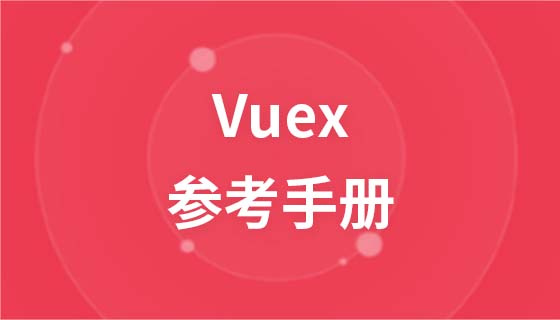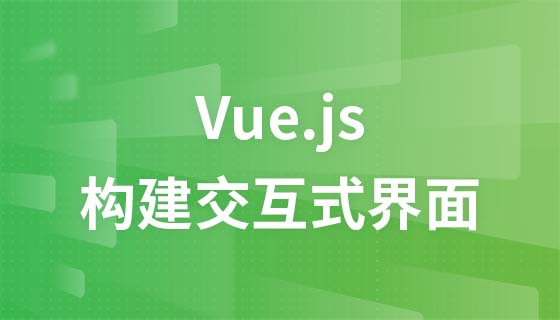下面Vue.js教學專欄帶大家了解vue.js中v-for的使用及索引獲取。有一定的參考價值,有需要的朋友可以參考一下,希望對大家有幫助。
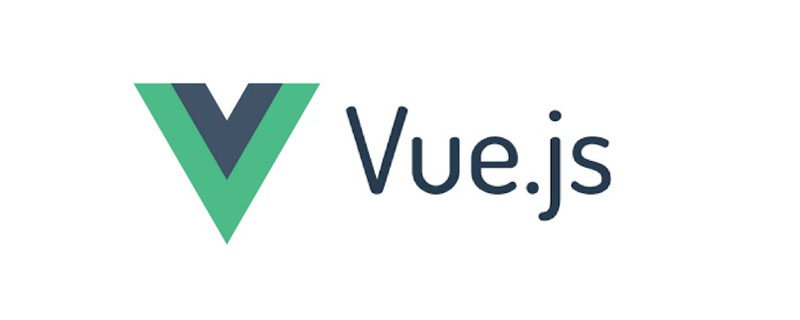
2.x版本:
#v-for="(item,index) in items"
index即索引值。
==========================分割線================== ===============
1.x版本:
1 .v-for
範例一:
<!DOCTYPE html><html><head>
<meta charset="utf-8">
<meta name="viewport" content="initial-scale=1.0, maximum-scale=1.0, user-scalable=no" />
<title></title></head><body>
<p id="didi-navigator">
<ul>
<li v-for="tab in tabs">
{{ tab.text }} </li>
</ul>
</p>
<script src="js/vue.js" type="text/javascript" charset="utf-8"></script>
<script type="text/javascript">
new Vue({
el: '#didi-navigator',
data: {
tabs: [
{ text: '巴士' },
{ text: '快车' },
{ text: '专车' },
{ text: '顺风车' },
{ text: '出租车' },
{ text: '代驾' }
]
}
}) </script></body></html>
##2.索引
在 v-for 區塊內我們能完全存取父元件作用域內的屬性,特殊變數 $index是目前陣列元素的索引:
<ul id="example-2">
<li v-for="item in items">
{{ parentMessage }} - {{ $index }} - {{ item.message }} </li></ul>var example2 = new Vue({
el: '#example-2',
data: {
parentMessage: 'Parent',
items: [
{ message: 'Foo' },
{ message: 'Bar' }
]
}
})
另外,你可以為索引指定一個別名(如果 v-for 用於一個對象,則可以為對象的鍵指定一個別名) :
<p v-for="(index, item) in items">
{{ index }} {{ item.message }}</p><p v-for="item of items"></p>
範例二:
<!DOCTYPE html><html><head>
<meta charset="utf-8">
<meta name="viewport" content="initial-scale=1.0, maximum-scale=1.0, user-scalable=no" />
<title></title></head><body>
<ul>
<li v-for="option in options">
<p class="text-success" v-on:click="getIndex($index)">Text:{{option.text}}--Vlue:{{option.value}}</p>
</li>
</ul>
<p v-if="isNaN(click)==false">
<span>你点击的索引为: {{ click }}</span>
</p>
<p v-else>
<p class="text-danger">试着点击上方LI条目</p>
</p>
<script src="js/vue.js" type="text/javascript" charset="utf-8"></script>
<script type="text/javascript">
new Vue({
el: 'body',
data: {
click: 'a',
options: [
{ text: '上海市', value: '20' },
{ text: '湖北省', value: '43' },
{ text: '河南省', value: '45' },
{ text: '北京市', value: '10' }
]
},
methods:{
getIndex:function($index){ this.click=$index;
}
}
}); </script></body></html>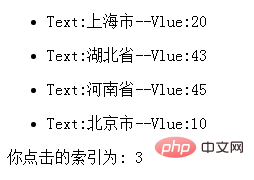
3.在點選事件中取到索引
# 方法一:新增自訂屬性
範例三:
<!DOCTYPE html><html>
<head>
<meta charset="UTF-8">
<title></title>
<style type="text/css">
a{display: block;}
</style>
</head>
<body>
<p>
<a v-for="(index,item) in items" data-index="{{index}}" v-on:click="onclick" href="http://www.baidu.com">{{ item.text }}</a>
</p>
<input type="text" name="" id="index" value=""/>
<script src="js/vue.js" type="text/javascript" charset="utf-8"></script>
<script type="text/javascript">
new Vue({
el: 'body',
data: {
items: [
{ text: '巴士' },
{ text: '快车' },
{ text: '专车' },
{ text: '顺风车' },
{ text: '出租车' },
{ text: '代驾' }
]
},
methods: {
onclick:function(event){
event.preventDefault();
let target = event.target
console.log(target.getAttribute("data-index"));
document.getElementById('index').value = target.getAttribute("data-index");
}
}
}) </script>
</body></html>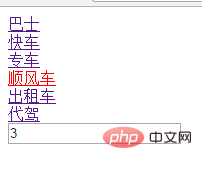
# 方法二:直接傳入索引值
## 範例四(和二差不多):
<!DOCTYPE html><html><head><meta charset="UTF-8"><title></title><style type="text/css">a{display: block;}</style></head><body><p>
<a v-for="(index,item) in items" v-on:click="onclick($index)" href="#">{{ item.text }}</a></p><input type="text" name="" id="index" value=""/><script src="js/vue.js" type="text/javascript" charset="utf-8"></script>
<script type="text/javascript">
new Vue({
el: 'body',
data: {
items: [
{ text: '巴士' },
{ text: '快车' },
{ text: '专车' },
{ text: '顺风车' },
{ text: '出租车' },
{ text: '代驾' }
]
},
methods: {
onclick:function(index){// index.preventDefault();
console.log(index);
document.getElementById('index').value = index;
}
}
})</script></body></html>不過有連結時:

與取索引雖然不衝突,但是如果要對所跳的連結做進一步操作,則無法阻止跳轉事件:

如果想直接傳索引可以用以下方法:
範例五:
<!DOCTYPE html><html>
<head>
<meta charset="UTF-8">
<title></title>
<style type="text/css">
a{display: block;}
</style>
</head>
<body>
<p>
<a v-for="(index,item) in items" v-on:click="onclick($index)" href="javascript:void(0)">{{ item.text }}</a>
</p>
<input type="text" name="" id="index" value=""/>
<script src="js/vue.js" type="text/javascript" charset="utf-8"></script>
<script type="text/javascript">
new Vue({
el: 'body',
data: {
items: [
{ text: '巴士' },
{ text: '快车' },
{ text: '专车' },
{ text: '顺风车' },
{ text: '出租车' },
{ text: '代驾' }
]
},
methods: {
onclick:function(index){// index.preventDefault(); console.log(index);
document.getElementById('index').value = index;
window.location.href = "http://www.baidu.com";
}
}
}) </script>
</body></html>4.關於v-for版本2.0與1.x的差異
# 2.0版本的範例五:
<!DOCTYPE html><html>
<head>
<meta charset="UTF-8">
<title></title>
<style type="text/css">
a{display: block;}
</style>
</head>
<body>
<p id="for5">
<a v-for="(item,index) in items" v-on:click="onclick(index)" href="javascript:void(0)">{{ index }}{{ item.text }}</a>
</p>
<input type="text" name="" id="index" value=""/>
<script src="js/vue2.js" type="text/javascript" charset="utf-8"></script>
<script type="text/javascript">
new Vue({
el: '#for5',
data: {
items: [
{ text: '巴士' },
{ text: '快车' },
{ text: '专车' },
{ text: '顺风车' },
{ text: '出租车' },
{ text: '代驾' }
]
},
methods: {
onclick:function(index){
console.log(index);
document.getElementById('index').value = index;// window.location.href = "http://www.baidu.com"; window.location.href = "#";
}
}
}) </script>
</body></html>此外,也可以提供第二个的参数为键名:
<p v-for="(value, key) in object">
{{ key }} : {{ value }}</p>第三个参数为索引:
<p v-for="(value, key, index) in object">
{{ index }}. {{ key }} : {{ value }}</p>
相关推荐:
更多编程相关知识,请访问:编程教学!!
以上是vue.js中如何使用v-for以及怎麼取得索引?的詳細內容。更多資訊請關注PHP中文網其他相關文章!
